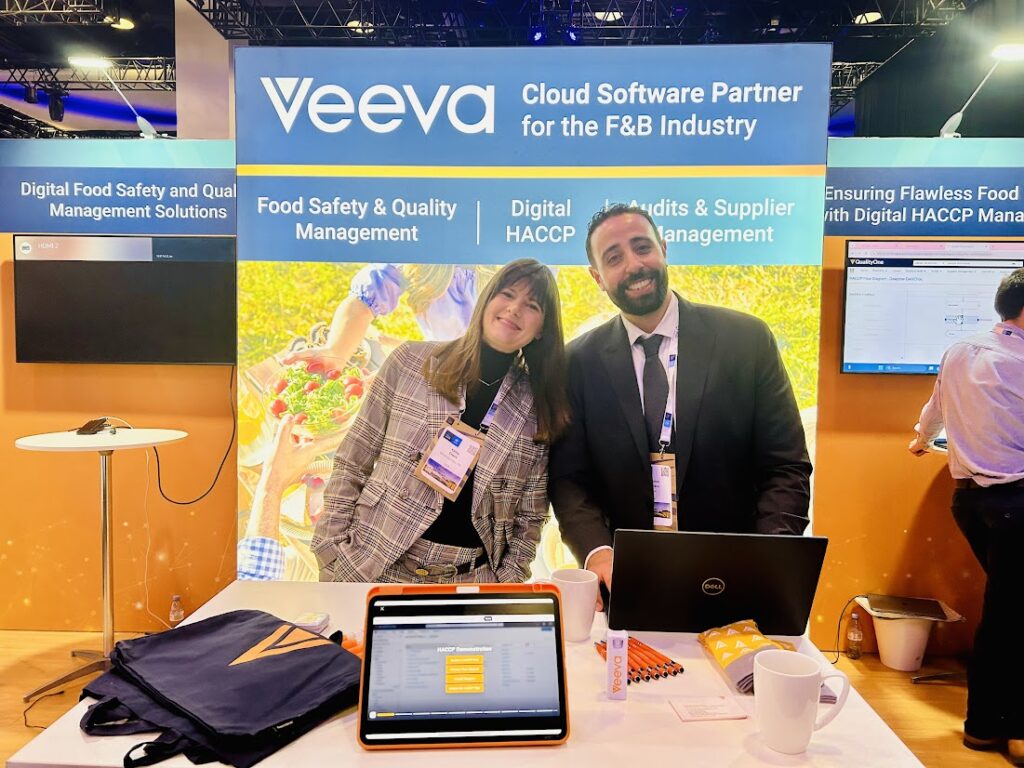As the curtains close on the 2025 Global Food Safety Initiative (GFSI) Conference in Dublin, one message resonates loud and clear: the future of food safety management is digital. Across keynotes, panel discussions, and fireside chats, industry leaders underscored the urgent need to modernize food safety practices to keep pace with an increasingly complex global supply chain, shifting regulatory demands, and to keep our promises to provide safe food to consumers.
Nowhere was this more evident than in the compelling fireside chat featuring Nestlé’s head of food safety John Donaghy, which illuminated the transformative impact of digital HACCP on food safety management. This discussion provided a glimpse into the next era of food safety—one where real-time data, predictive analytics, and seamless collaboration drive unprecedented levels of efficiency and resilience.
Key Takeaways from GFSI 2025: A Call to Action for Food Safety Leaders
1. From Reactive to Predictive: The Power of Digital HACCP
For decades, HACCP has been the foundation of food safety management, yet many companies still rely on outdated, paper-based processes. At GFSI 2025, industry experts stressed that digital HACCP is no longer an option—it is an imperative. By harnessing real-time data and AI-driven insights, companies can anticipate risks before they escalate, ensuring proactive hazard management and faster decision-making.
2. Scaling Food Safety Across Global Operations
Managing food safety across a network of hundreds of factories is no small feat. Nestlé’s journey toward a fully digital HACCP system showcased how modern platforms enable companies to maintain consistency and governance at scale while remaining agile enough to adapt to local regulatory changes and emerging hazards. Their approach highlighted the importance of centralized, structured data to facilitate seamless communication and compliance across geographies.
3. Executive Buy-In is Essential for Digital Transformation
A major theme at GFSI 2025 was the need for strong leadership to drive digital adoption in food safety. The Nestlé-Veeva discussion underscored how securing executive support requires demonstrating clear ROI—from reducing compliance risks to improving operational efficiency. Companies that invest in digital food safety solutions today will not only mitigate risk but also gain a competitive advantage in an industry where consumer trust is paramount.
4. Collaboration is the Key to Industry-Wide Progress
No company can tackle food safety modernization alone. Speakers at GFSI emphasized the importance of cross-industry collaboration in advancing digital solutions that benefit the entire food supply chain. By sharing best practices, aligning on data standards, and leveraging scalable digital tools, the industry can move toward a future where food safety is not just managed but optimized through innovation.
What Comes Next? Continuing the Digital Food Safety Journey
The insights shared at GFSI 2025 make one thing clear: the digital transformation of food safety is well underway, but there is still work to be done. Organizations that take decisive action now will be better equipped to handle the challenges of an evolving food landscape while strengthening consumer confidence.
For those looking to deepen their understanding of digital HACCP and learn from Nestlé’s pioneering approach, a dedicated resource page is available to explore key insights, best practices, and implementation strategies for modern food safety management.
Access expert insights and take the next step in future-proofing your food safety strategy by visiting the Digital HACCP Resource Center.
As GFSI 2025 demonstrated, the future of food safety is not just about compliance—it is about building a smarter, safer, and more resilient food system through digital innovation. Let’s continue this conversation and drive meaningful change together.

